In the last couple of decades, the double-handed backhand has taken off in popularity in both the ATP and WTA tours, but why is this especially true for women’s backhands?
Why did the two-handed backhand become so popular?
Before we dive into women’s tennis specifically, let’s talk about why the two-hander became such a popular choice for backhand strokes across the entire tennis world. Well, the reason is at face value, it’s to get that extra control and consistency in your shot and, in many cases, more power too.
An added arm onto the racquet helps immensely with controlling a backhand shot, and that is because, unlike the forehand, a one-handed backhand follow-through travels away from the body rather than wrapping around the body. This means you get less control as your center of gravity is slightly off-balance and you can’t quite get your body behind the ball as effortlessly as the forehand.
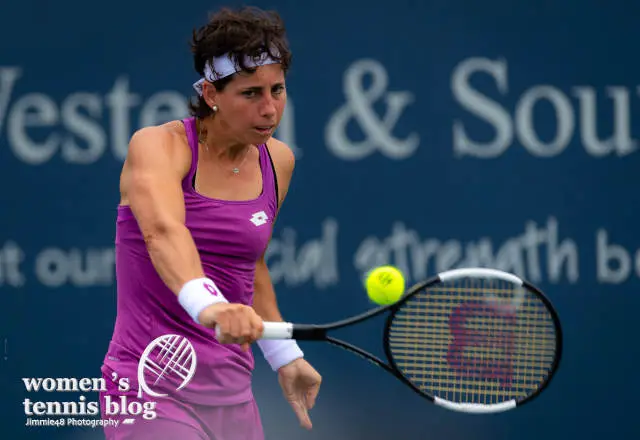
Another issue with the one-hander is it requires an extra bit of footwork to adequately prepare for the shot, in other words, you must be side-on to the ball rather than in an open stance, whereas a two-hander backhand can still produce results with the latter.
For these reasons, it’s no wonder the two-hander became overwhelmingly popular in both men’s and women’s tennis, I mean, who doesn’t want more consistency in their game? Moreover, it’s far easier for young children to get into the sport with a two-handed backhand as it has a smaller learning curve and is great for confidence-building early on. Looking at the bigger stage, the pros have gradually been converted over the decades, starting off with early successes such as Chris Evert who brought enormous recognition to the two-hander, becoming the first women’s tennis player to win a Grand Slam with the groundstroke.
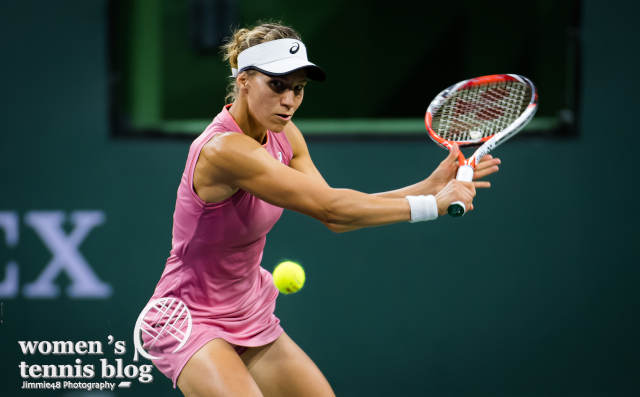
Is the one-hander still viable in women’s tennis today?
Absolutely! There is a major difference between being popular and being viable, and the one-hander can still be seen, albeit on rare occasions, across the women’s circuit. Currently, the top-ranking women’s player who uses this stroke is Viktorija Golubic, who is ranked No.43 in the world and is now the only player in the WTA Top 100 to have a one-handed backhand. Of course, some retired players in the modern era of women’s tennis have gone as far as winning a Grand Slam too, even in this age of predominantly two-handed backhanders, a classic example being Italy’s Francesca Schiavone who won the 2010 French Open title and secured the runner-up in the following year.
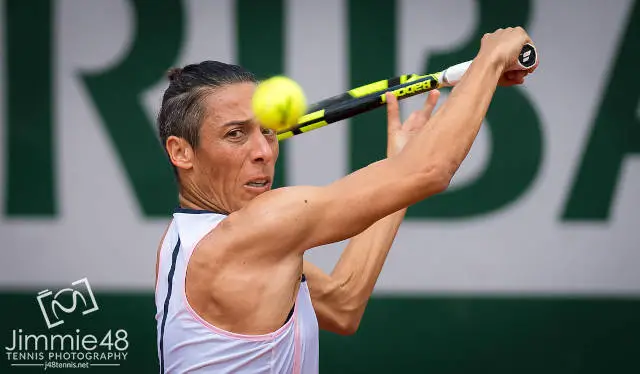
There’s no doubt that women still have the option of taking on the single hander in today’s game and experiencing success with the groundstroke, but the question comes down to this: what’s really in it for them? The success of Chris Evert signalled a new age of women’s backhands that would almost immediately become the new preferred stroke in the WTA Tour. This is because of the reduced strain on the arm and wrist as well as the increased control and power that could be gained with the shot, not to mention fewer footwork requirements. Nowadays, a two-hander is the “obvious” choice to a large degree for most women, so it takes someone who is physically stronger and perhaps taller in height to want to willingly pick up a one-hander in the WTA Tour.
In spite of all that, a one-handed backhand is still a viable option of groundstroke today, and some women few and far between are currently using it for their game. So, the next thing to consider is what are the unique benefits of using a one-hander over a two-hander? The answer is you can potentially generate more power than a two-hander should you prepare adequately enough prior to the shot. Most of the time, a two-hander generates more power because it requires less of a “wind-up” before you swing, but if you can prepare that backswing nice and early with a one-hander then you get plenty more swinging space to generate more power and more topspin. There’s also the benefit of masking universally one-handed strokes such as slices, drop shots and volleys with that single-handed wind-up preparation.

What’s the trajectory of women’s backhands looking like from here?
The reality is, women’s backhands, as well as the men’s for that matter, were mostly single-handed during the older eras of tennis not because it was preferred but because of the lack of notable players who could market a two-hander well. For women, it was 18-time Grand Slam singles champion Chris Evert who popularized the two-hander, and for the men, it was the rivalry of Bjorn Borg and Jimmy Connors that brought the stroke to the vast view of the public. Keeping that in mind, it wouldn’t be wrong to assume that the two-hander is the naturally superior choice for women’s backhands, as factors such as one’s height and wrist strength come into play. Considering that women are, on average, shorter than men and generally not as muscular in a biological sense, maintaining a single-handed backhand is not only unnecessarily more difficult but is also unlikely to produce the same results in terms of power, speed, and control.
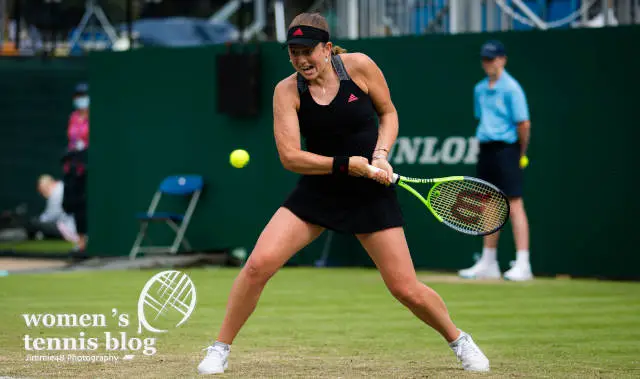
From a logical standpoint, the two-hander is superior in more ways than a one-hander, and it’s an extra bit true for women because of their different biology and builds. Ultimately, whether a tennis player chooses a single or double-handed backhand is largely about personal preference and their own vision of how they want to play the game. Of course, if that alone was the deciding factor then the distribution of one and two-handers would be much more equal, but the fact of the matter is people’s decisions are, whether they know it or not, influenced by the suitability of their physical attributes to make the shot. In other words, it is common for people to let go of their preference for a one-handed backhand for the simple reason that they experience more success with the two-handed counterpart, as opposed to actually preferring the look and feel of the swing itself. At the end of the day, winning is one of the most appealing aspects of playing tennis, so it’s only natural to gravitate towards the stroke that brings more results for you and even persuade yourself over time to actually like that shot more than your original preference as you continue to build success with it.
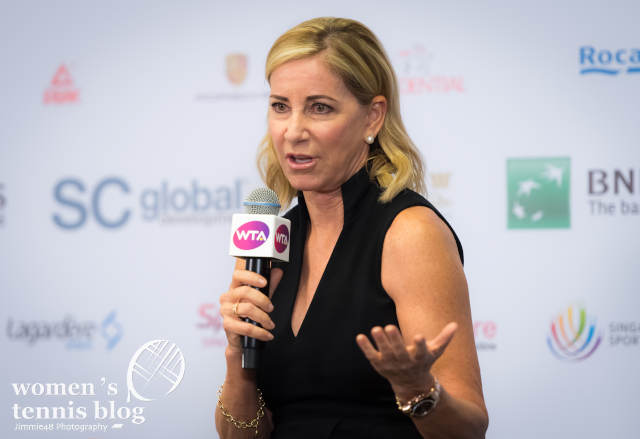
On a final note, it’s highly unlikely that the one-handed backhand will ever return to its former glory of being the majority’s preferred shot, and this is true for both men’s and women’s tennis. On the other hand, it’s also unlikely that the shot will ever die out completely, and the reasoning behind this is purely rooted in the natural aesthetic of the one-hander which generally looks and feels more “musical” in a sense. While winning is perhaps the most important and greatest driving force for most tennis players, the original love for the game begins with an initial attraction to the beauty of the sport, and the one-handed backhand has certainly caught the eyes of many with its mesmerizing wind-up and graceful finish.







Margarita Gasparyan is another who is good but has injury issues. There are many more great one handed backhands on the ATP (Federer, Wawrinka, Thiem, Tsisipas, Dimitrov) Maybe a young lady with a one hander is out there and will do well to inspire other girls to take it on.
In another individual sport, why is it there are no left handed female professional golfers? You do see famous male lefties..Mickelson, Wier, and Bubba Watson for example. At least in tennis you have quite a few great male and female lefties.
This article does not state what has really occured in women’s tennis at all levels of instuction. The one-hand backhand has been eradicated because instructors will no longer teach it to women. They are now exclusively teaching the two-hander not only to young girls but all adult women. They also no longer transition junior players to the one-hander when their student reaches the appropriate age to do so, which is what used to be done. That takes real instructing which includes teaching grip changes as well as teaching new and more advanced techniques. It’s much easier for instructors to convince and falsely prove to the studunt that they are not strong enough and need more power. The same also happening in most of Men’s tennis. Some of the reasons given in this article supporting the 2-hander as being a better shot for women due to their smaller size, less strength, and biology do not make sense since tennis is a game in which both sexes are capable of learning and mastering all the same techniques. There does not need to be different strokes taught to men and women. The exceptions are children and players with some type when of hand/arm
problems. Many of todays women pros are not small at all and many are strong. We would need former players such as Justine Henin or Martina Navratilova to teach their games but that isn’t being done and there is no tennis program committed to teaching the one hander. There should be one. The strange thing is that no one questions this but something is clearly wrong when more than 90% of women, some of them great athletes, are plaing two-handed.
I am with you Roger!